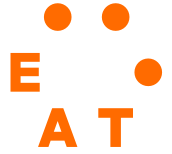A SYSTEMIC TRANSFORMATION
Open Farming replaces innovatorsʼ monopoly rights under legal code with revenue share under software code.
We prove the system profitably in partnership with ESG agri-food investors who lead investees to the Open Farming intellectual commons.
It enriches and illuminates the interconnectedness, grows the commonwealth of knowledge, and opens up contextualised innovation for everyone.
... and so helps make fresh, nutritious and affordable food available to everyone, everywhere, everyday — regeneratively.
About Open Farming
Read the following summary and / or
download a more technical description (PDF)
Farming is in crisis. There is a growing demand for food and yet farming cannot rely on its old methods. These methods work against the Earth’s health rather than with it.
The situation is so bad in many places and in many ways that it isn’t enough to merely sustain things. We need to make fresh, nutritious and affordable food available to everyone, everywhere, everyday, and repair the health of our environment in the process.
This means we have to get smarter and ensure that today’s and tomorrow’s smart thinking gets taken up by more farming communities more rapidly than at any time in history. Not just ten times faster. Not one hundred times faster. A thousand times.
Open Farming takes aim at two major obstacles blocking this transformation. They are so significant that very many people fail to see them at all.
Today, the dominant business model in every sector — including agriculture — deliberately sets out to stop people adopting innovation. It prevents them from applying better processes, from learning about these processes together and contributing to our collective wisdom. Only if and when they are able to pay for it, often upfront, and only if and when they demonstrate ongoing compliance with the accompanying rules, can they strive to make progress.
This business model is called intellectual property (IP) rights. It has been the only way to reward innovators for centuries. But, with your help, that changes from today.
The new model is called intellectual commons, a model through which all participants, including innovators, derive greater value at greater speed. Only now do we have the digital technologies and the system understanding to bring the intellectual commons to life.
The system is open to all. As more farming communities make it their own system — because it has immediate value and is cooperatively owned — and apply the system to more and more of their farming operations, this intellectual commons creates more and more information for all to see, to feel, and to learn from. This helps us rise up to the second obstacle ...
A farmer invests in growing a crop and you (ultimately) buy it. But who pays for the pollution? Who pays for the decline in insects and birdlife? Who pays for the soil erosion and decline in soil fertility? The consequences of the way we farm today are not priced in, and we have too few facilities to address that.
The current system separates us from the damage we do to our environment, and when this damage is not plain to see it makes it hard for anyone to act differently and change the system. Open Farming helps communities ‘see’ the health of their land, their environment, their place, and prompts a collective response to everyone’s benefit.
Waiting for the financial beneficiaries of today’s agricultural sector to lead this change is a wait too long. Rather, we can all join together to work as nature — open, decentralized, cooperative and competitive, and above all, able to give back to Earth more than we extract.







